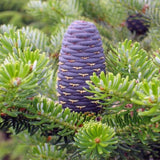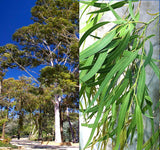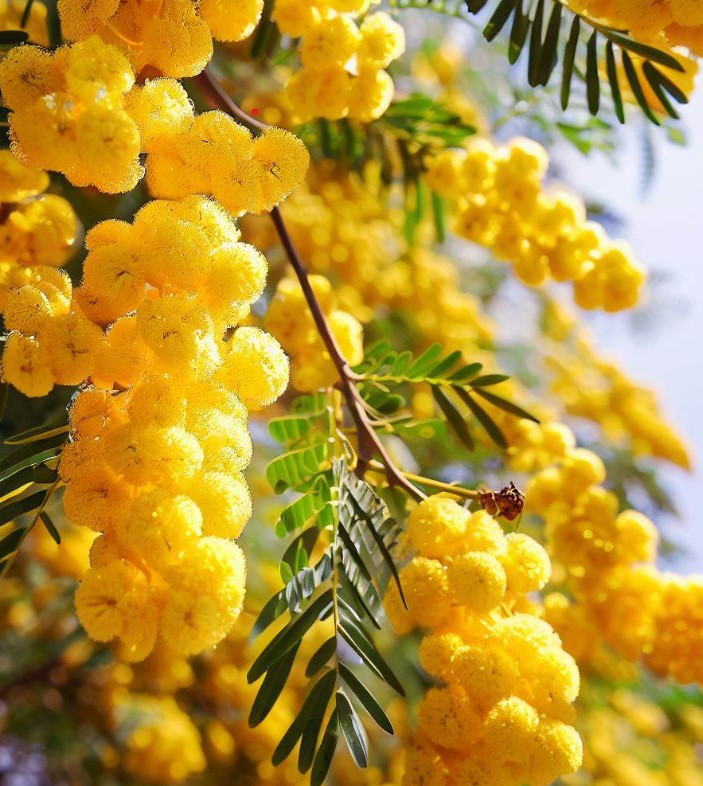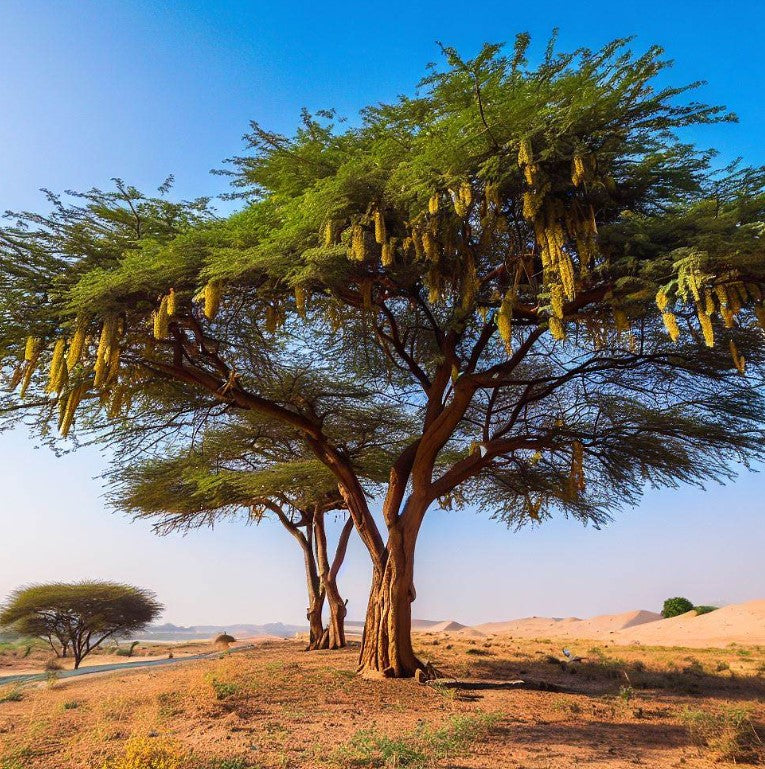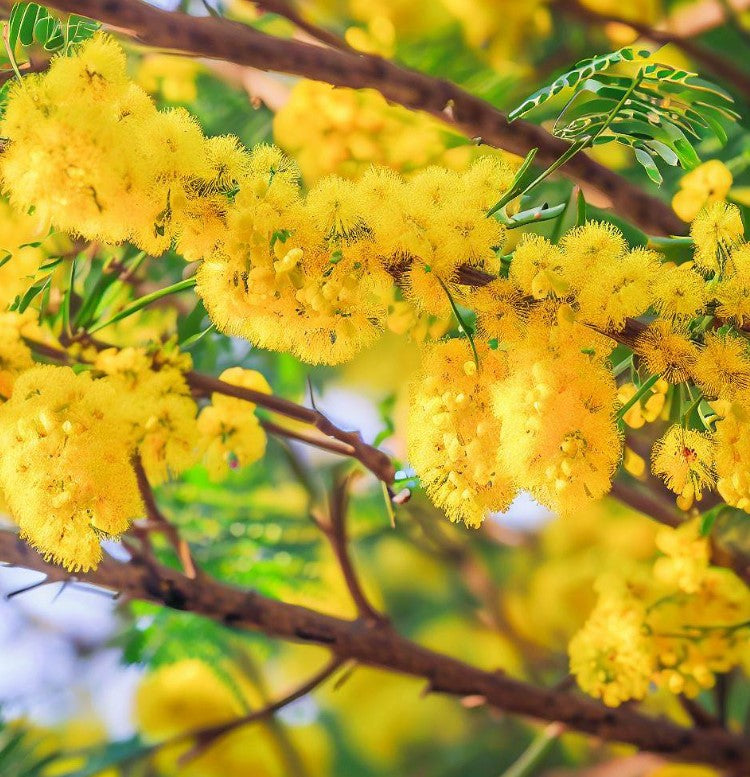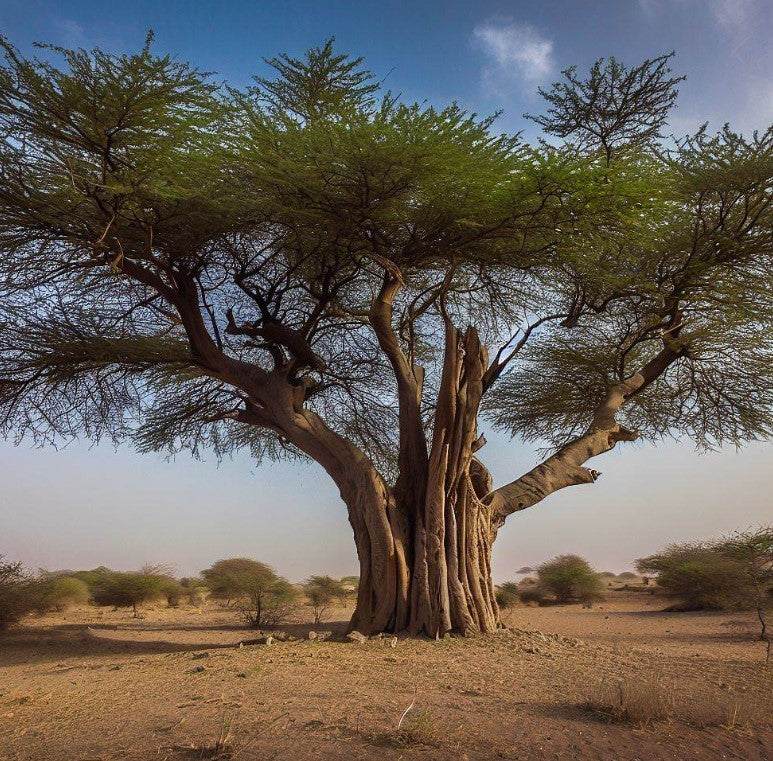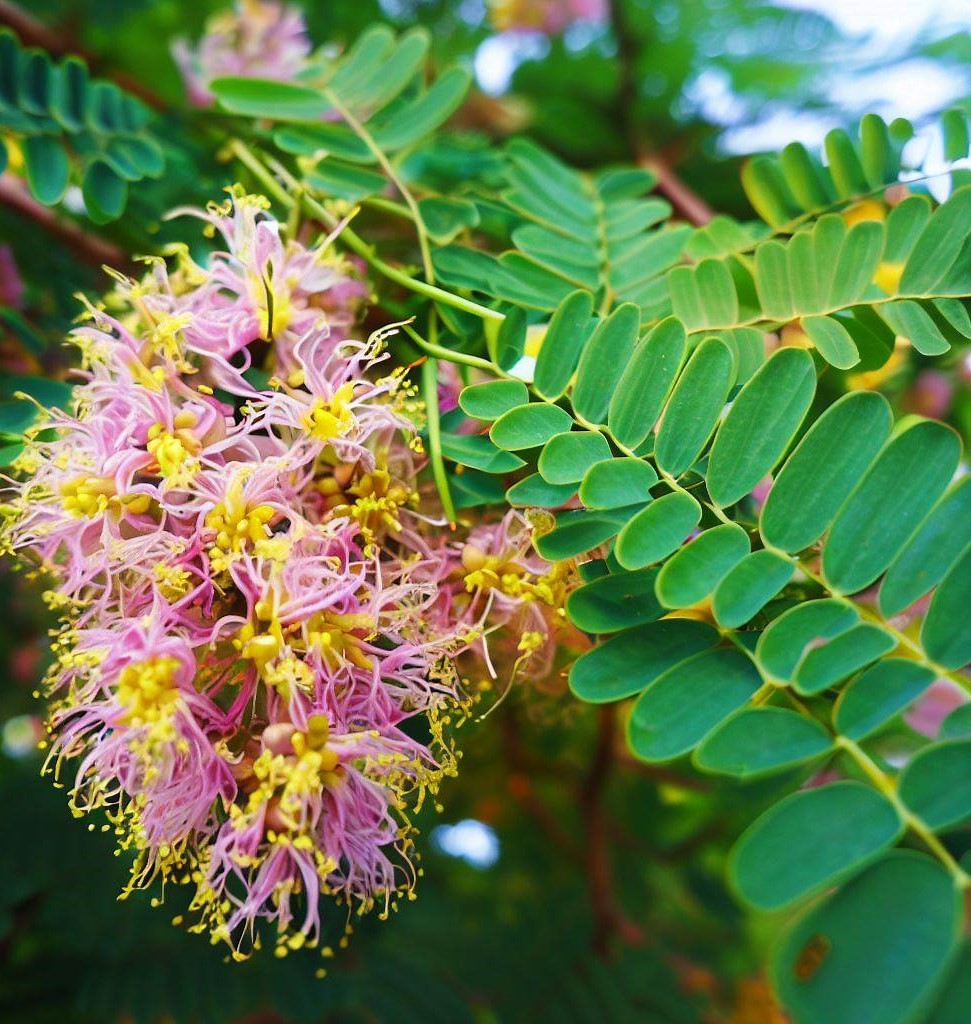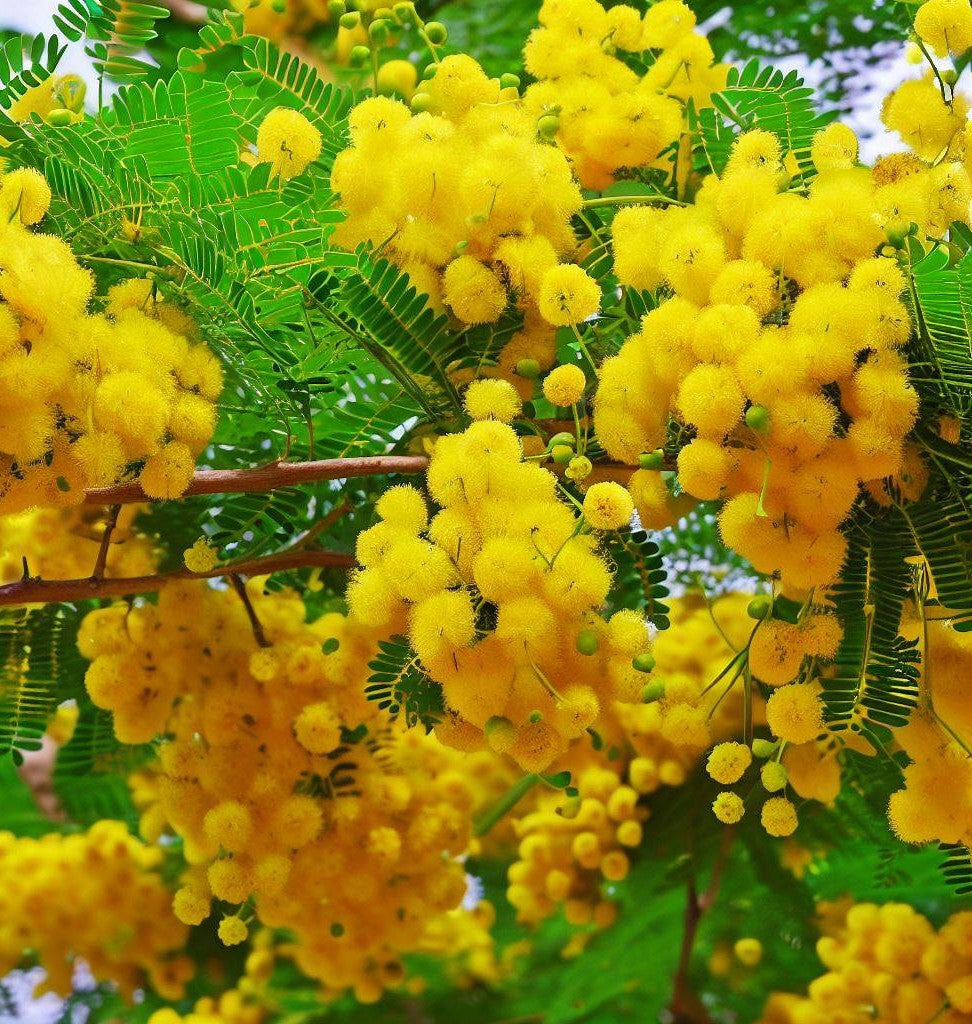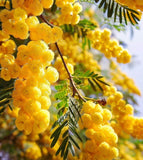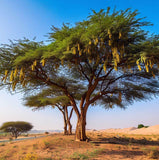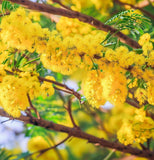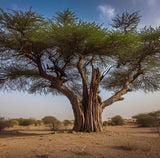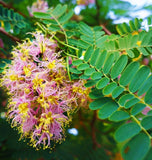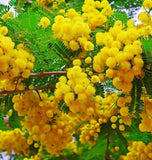Acacia arabica (Gum Arabic Tree, Babul Tree)
Acacia arabica (Gum Arabic Tree, Babul Tree) is a species of flowering tree in the family Fabaceae. It is native to the Indian subcontinent, including areas of India, Pakistan, and parts of Africa and the Middle East. It is a versatile and valuable tree known for its gum production, medicinal uses, and ecological importance. Its distinct appearance, fragrant flowers, and thorny nature make it a notable species within its native range.
Appearance: The gum arabic tree is a small to medium-sized deciduous tree that typically grows up to 5 to 20 meters (16 to 66 feet) in height. It has a spreading and often thorny crown, with a trunk that is rough and grayish-brown in color.
Leaves: The leaves of Acacia arabica are bipinnate, meaning they are divided into smaller leaflets. Each leaf consists of several pairs of pinnae (primary leaf branches), and each pinna has numerous small leaflets. The leaflets are small and elongated, with a grayish-green color.
Flowers: The tree produces small, fragrant, creamy-yellow flowers in spherical clusters called inflorescences. These clusters are typically 2 to 5 centimeters (0.8 to 2 inches) long and appear during the spring season. The flowers are rich in nectar and attract bees and other pollinators.
Fruits: After flowering, Acacia arabica develops elongated, curved pods that are dark brown in color. These pods contain several small seeds and mature during the summer months. They eventually dry out and split open to release the seeds.
Gum Arabic: One of the notable characteristics of this tree is its production of gum arabic, a natural gum harvested from the tree's bark. Gum arabic is a hardened sap-like substance that is used in various industries, including food, medicine, and cosmetics. It has adhesive properties and is commonly used as a stabilizer, thickening agent, and emulsifier.
Uses: The babul tree has multiple uses and is considered valuable in traditional medicine and Ayurveda. Various parts of the tree, including the bark, leaves, and gum, are used for their medicinal properties. The wood of Acacia arabica is hard and durable, making it suitable for construction, furniture, and fuelwood.
Ecological Importance: The gum arabic tree is ecologically significant as it provides shade, contributes to soil fertility, and acts as a valuable source of food and habitat for wildlife. It has nitrogen-fixing properties, which means it can convert atmospheric nitrogen into a form usable by plants.
Botanical Name : Acacia arabica
Common Name : Gum Arabic Tree
Height : 20-40 ft
Spread : 25-50 ft
Germination Info : Seed requires a scarification prior to sowing to break down the hard seed coat
Hardiness zone : 8-10
Average seed per ounce : Approx. 160

